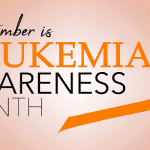What is Bone Marrow?
The average human body contains anywhere from five to seven quarts of blood. When one’s blood is lost, it has to be replenished. Even the blood that stays in our body needs to be replaced as it ages. The amazing mechanism that handles blood replacement is known as bone marrow. Bone marrow is an integral part of the circulatory system, and knowing more about how it functions is useful for good health.
What is bone marrow?
Bone marrow is a soft, sponge-like tissue on the inside of our bones that develops red blood cells, white blood cells and platelets. Not all bones contain marrow, and it is mostly found in the ribs, vertebrae, pelvis and sternum. There are two types of marrow, yellow and red marrow. Bone marrow contains immature cells called stem cells. Red marrow is a delicate, highly vascular fibrous tissue that holds hematopoietic stem cells that produce blood. Yellow marrow contains mesenchymal stem cells that produce fat, cartilage and bone.
Bone marrow is the body’s primary producer of these cells. The process of producing these cells takes place in stages. Marrow typically contains both fully mature cells and cells at each stage of development. Usually, once the cells are fully mature, they are released from the marrow into the bloodstream.
What medical conditions involve bone marrow?
Like any part of the human body, marrow can develop problems. Because marrow produces blood, and blood is necessary to survive, any issues in our marrow are considered serious and may require treatment. Many of these conditions can be life-threatening.
Most of the common marrow conditions concern an abnormality in cell production. Perhaps the most well-known marrow condition is leukemia. Leukemia is a type of cancer in the blood caused when mutated white blood cells are produced. These white blood cells do not work correctly, which compromises the immune system. Furthermore, the number of mutated white blood cells soon begins to crowd out healthy blood cells in the blood vessels and the marrow.
Another type of marrow condition is aplastic anemia. This condition occurs when the bone marrow does not produce enough red blood cells. Since these cells are responsible for carrying oxygen throughout the body, not having enough of them is a concern. Aplastic anemia typically happens when there is damage to the stem cells within the bone marrow.
A third common marrow condition is a class of diseases known as myeloproliferative disorders. These disorders involve damage to the stem cells in marrow, leading to abnormal cell production or an abnormal amount of cells.
Regardless of the condition, the most common and effective treatment for these diseases and others is a bone marrow transplant.
How does a bone marrow transplant work?
About 10,000 Americans are diagnosed with diseases that require marrow transplants each year. A marrow transplant involves adding healthy stem cells to a recipient’s bloodstream. These stem cells then find their way to the damaged marrow and help fix it by creating new pockets of marrow.
These transplants can be autologous, where stem cells are taken from the actual patient and put back in later, or allogeneic, where stem cells are taken from a matching donor. Either way, it is a long process that involves stem cell collection, chemotherapy and injections.
Hematologist in Raleigh
Bone marrow is a vital part of the health and wellness of the human body. Without properly functioning bone marrow, we are susceptible to a host of life-threatening conditions. Knowing more about your marrow and these conditions is the first step in staying healthy.
At Personalized Hematology-Oncology, our board-certified hematologist specializes in treating conditions involving the blood, marrow and blood cells. As a comprehensive oncology and hematology practice, we also treat blood cancers such as leukemia, lymphoma and myeloma.
If you’d like to schedule an appointment with a hematologist, please contact us today.





